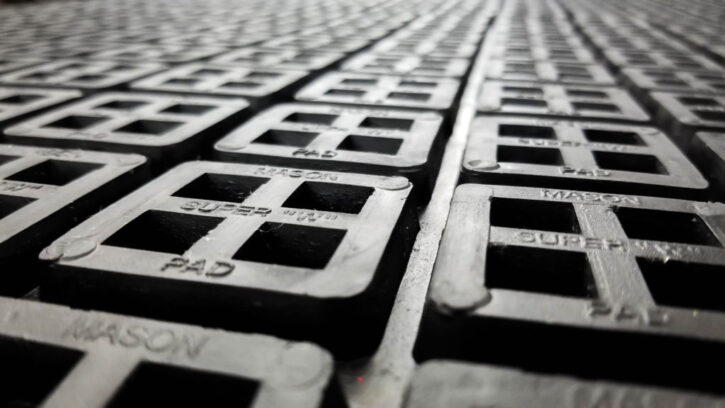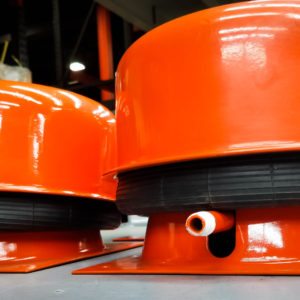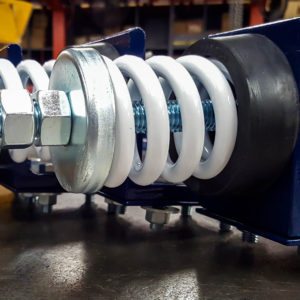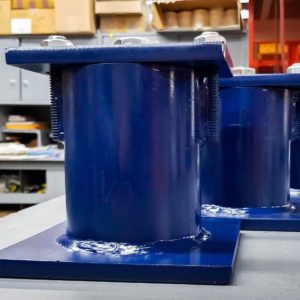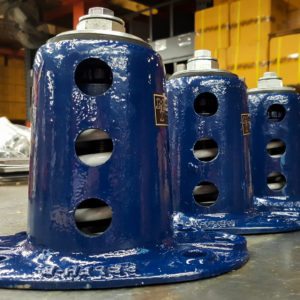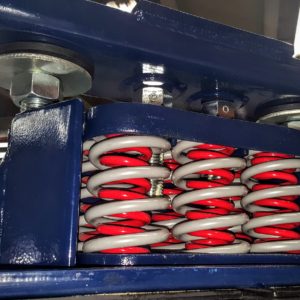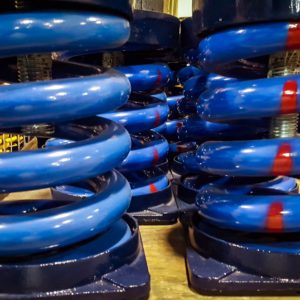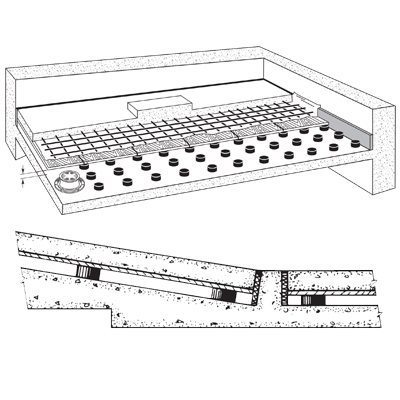Pads
NEOPRENE PADS Up until the 1950’s most rubber mountings were designed to take the load in shear. Mountings were circular or sold in long strips, so the capacity could be controlled by size and durometer, or durometer and the cut off length. Shear loading curves are straight line similar to steel springs. The deflection can be used directly in the frequency equation after dynamic stiffness correction. Unfortunately,…

